2011
Harvest
2011
Harvest
Veneto
There were rains in November, then it was cold, but not excessively, with little snow (there is never much snow in the area of Verona). Then it was cold in April and the vines budded very early. In August it was very hot and this slowed down the vegetative cycle of the vines. The Garganega grape ripens late so that the vines did not suffer, at the end of August the Garganega grapes were still in the veraison phase. The vegetative cycle of the vines turned back to normal.
MONTEFORTE D’ALPONE (Province of Verona)
Claudio Gini – Azienda Agricola Gini (Soave Classico DOC, Recioto di Soave DOCG):”..In September the weather was very good, we waited one more month and we started to pick the Garganega grapes on the 3rd of October. The harvest will end at the end of the month. After the heat in August, in September we had a lovely day/night temperature range ideal for Garganega (i.e. a low temperature at night) in order to ripen properly. In October the weather was very good so that we harvested without problems. The clusters were beautiful and we are very satisfied. We made the whole range of wines. We have put a large quantity of clusters to dry for the production of Recioto. 2011 is a lovely vintage. In September the sugars of Garganega were low, but then the sugars increased in October (which means that the clusters ripened). Grape yield is slightly lower. It is still early to give an opinion on the wines…”
NEGRAR (Province of Verona): It was rainy in the springtime and during the first half of the summer. The temperature was high from mid August onwards.
Antonio Mazzi – Azienda Agricola Mazzi (Amarone della Valpolicella Classico DOC, Recioto della Valpolicella Classico DOC, Valpolicella Classico Superiore DOC): “..2011 is a good vintage. We did not have problems with pests nor with diseases. The harvest started one week earlier than usual. We started picking on the 12/13th of September and we finished at the beginning of October (6-7th of the month). The grapes ripened well. Up to this moment (25th of October) we have vinified only the Valpolicella wine (with temperature control at 22-23 degrees Celsius). The vinification went fine. ….We will press the clusters for the production of the Valpolicella cru Poiega (the clusters are dried for approx. 30 days before being pressed) next week and we will probably press the clusters for the production of Amarone at the beginning of December (every year the “Consorzio Tutela Vini della Valpolicella” – Consortium for the protection of the Valpolicella Wines – sets a date starting from which the producers can press the clusters, that have been dried, for the production of Amarone. It is usually the 15th of December, but this year it is likely that the date will be the first of December as the vegetative cycle started early)…. The clusters for the production of Valpolicella cru Poiega are drying well. The month of October is very important for the drying process…”
VALDOBBIADENE (Province of Treviso): November 2010 was very rainy till the beginning of December. The winter was mild, less cold than 2009 and 2010. It was -7/-8 degrees Celsius only for one day. In April it was very warm for 10 days. Flowering of the vines took place 15 days early. In June and in July it rained and the temperature was quite low. The weather was warm in August and in September.
Daniele D’Anna nephew of Bruno Bortolotti owner of Cantine Umberto Bortolotti (Conegliano Valdobbiadene DOCG Prosecco Superiore, Valdobbiadene Superiore di Cartizze DOCG, VSQ, Prosecco DOC). Cantine U. Bortolotti vinify the grapes grown by a group of viticulturists, within the Valdobbiadene zone, that have been carefully selected over the years :”…there were few sunny days in June and during the first 15 days of July: a “green autumn”! Our group of viticulturists started picking Glera (the former Prosecco) grapes on the 9th of September. Pinot Bianco and Chardonnay were picked starting from the first of September. Two viticulturists of the area around Cartizze (not within the Cartizze zone) lost 80% of the yield due to hail. In other zones the grape yield was high (although it was always within the regulation, i.e. 13.5 tons/hectare). This year we will make Conegliano Valdobbiadene Prosecco Superiore Rive* di Rolle and Conegliano Valdobbiadene Prosecco Superiore Rive* di S. Stefano from two vineyards in the zones of Rolle and of S. Stefano” *Note: The wines with “Rive” indication on the label are available only in the fully sparkling style, and represent the essence of terroir. They are produced, in fact, exclusively from grapes that come from a single Commune or hamlet/village therein, thus highlighting the characteristics that a particular area confers on its wine. The Rive wines allow one, therefore, to get to know the manifold expressions of Conegliano Valdobbiadene in detail. The term “Rive” indicates, in the local dialect, vineyards that are on steep ground, and the aim of the category is to underline the special quality of – and the many differences between – the various sites within the Appellation. For the “Rive” maximum yields are reduced to 13 tonnes per hectare; the grapes must be picked by hand and the vintage must be shown on the label. In the Conegliano Valdobbiadene zone there are 43 Rive, which offer an equal number of distinct territorial expressions (Source: Consortium of Conegliano Valdobbiadene Prosecco Superiore)


